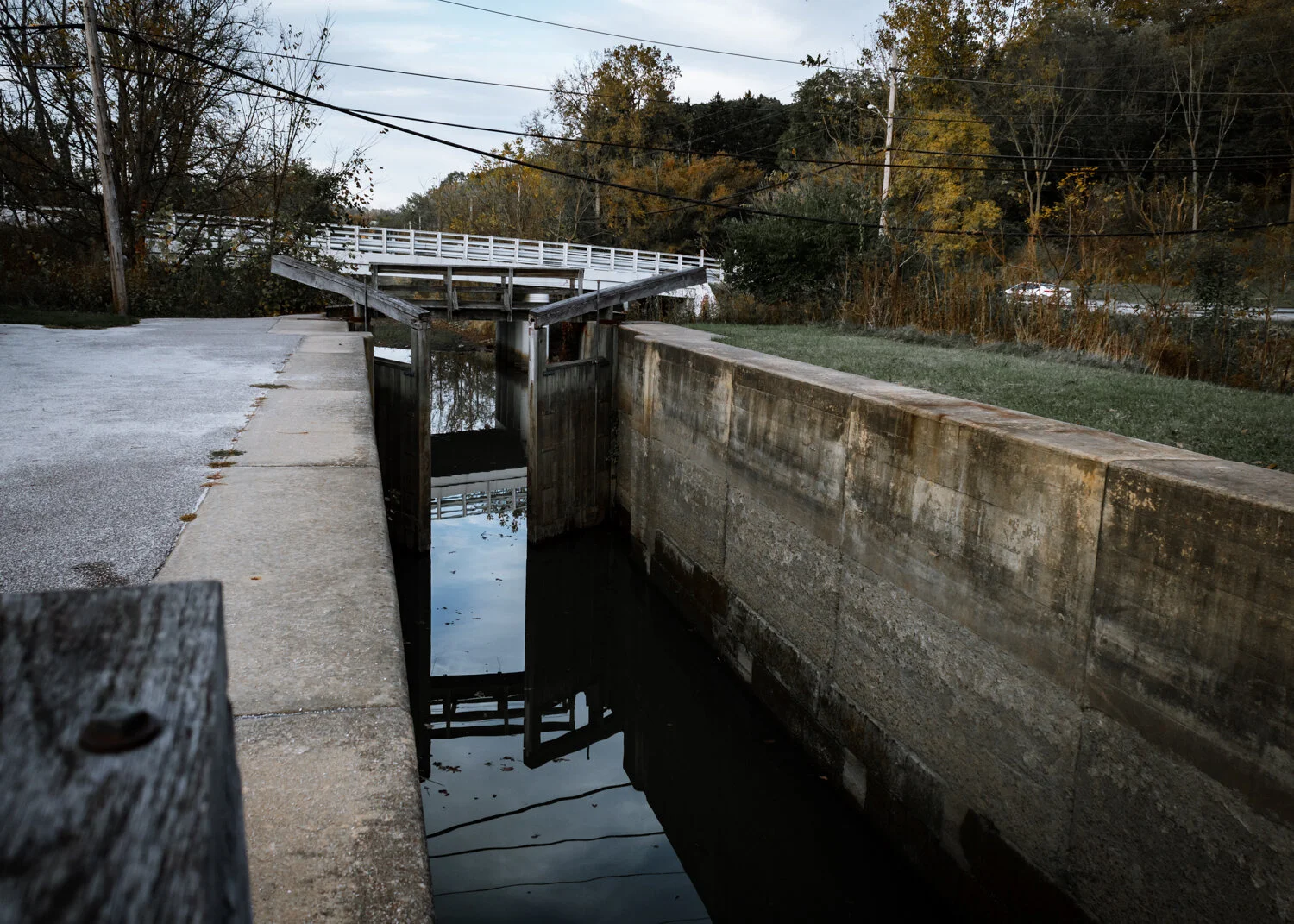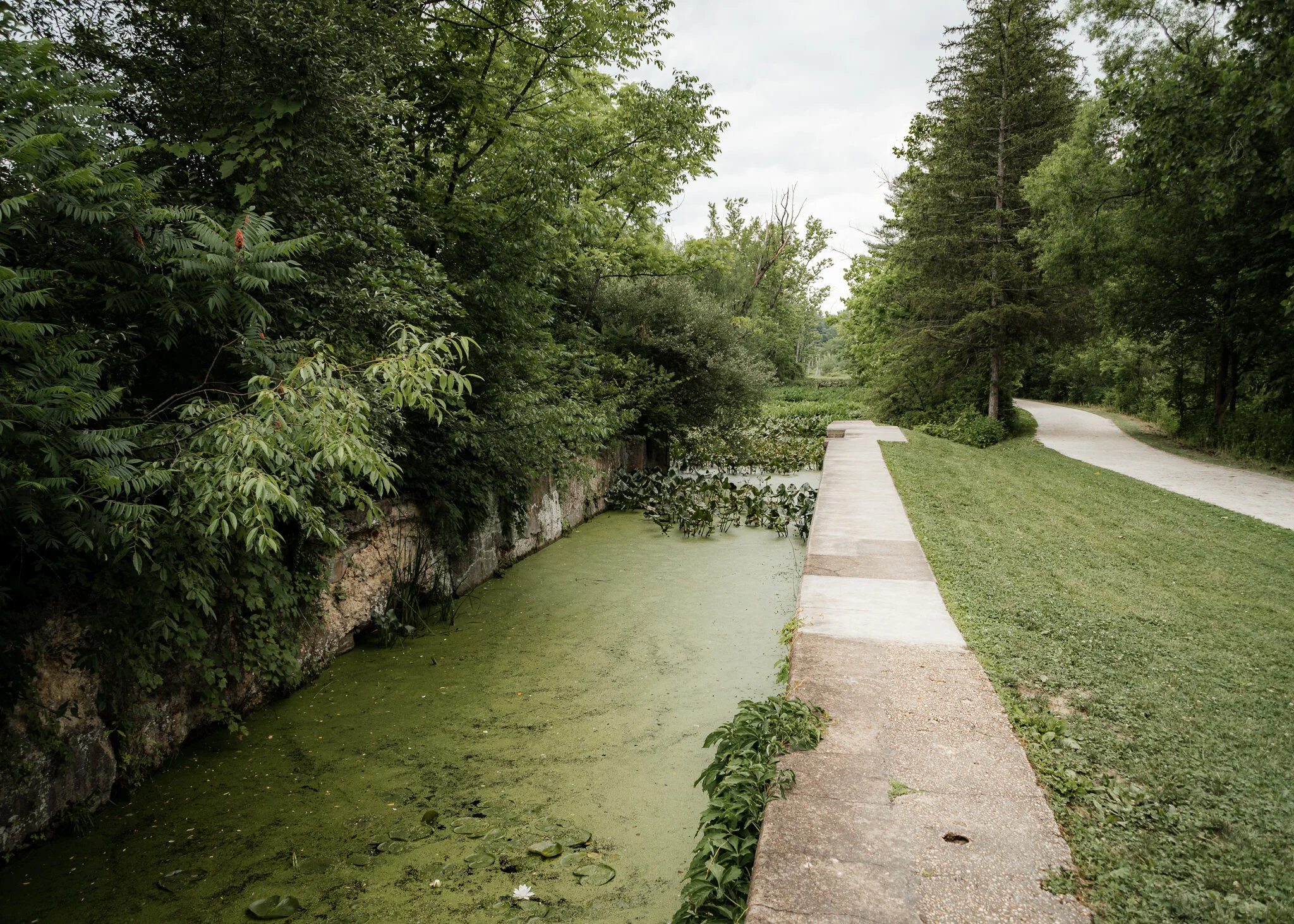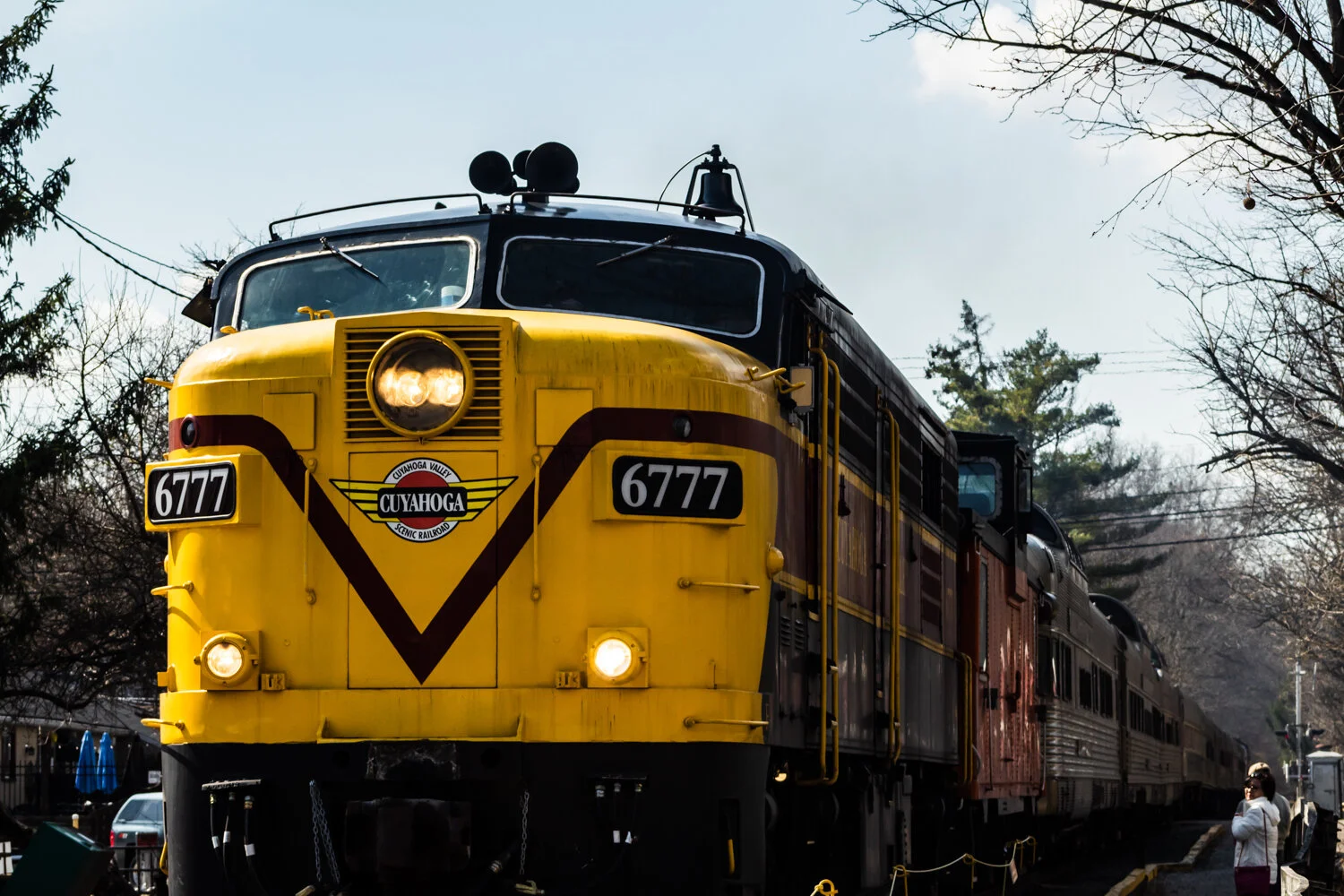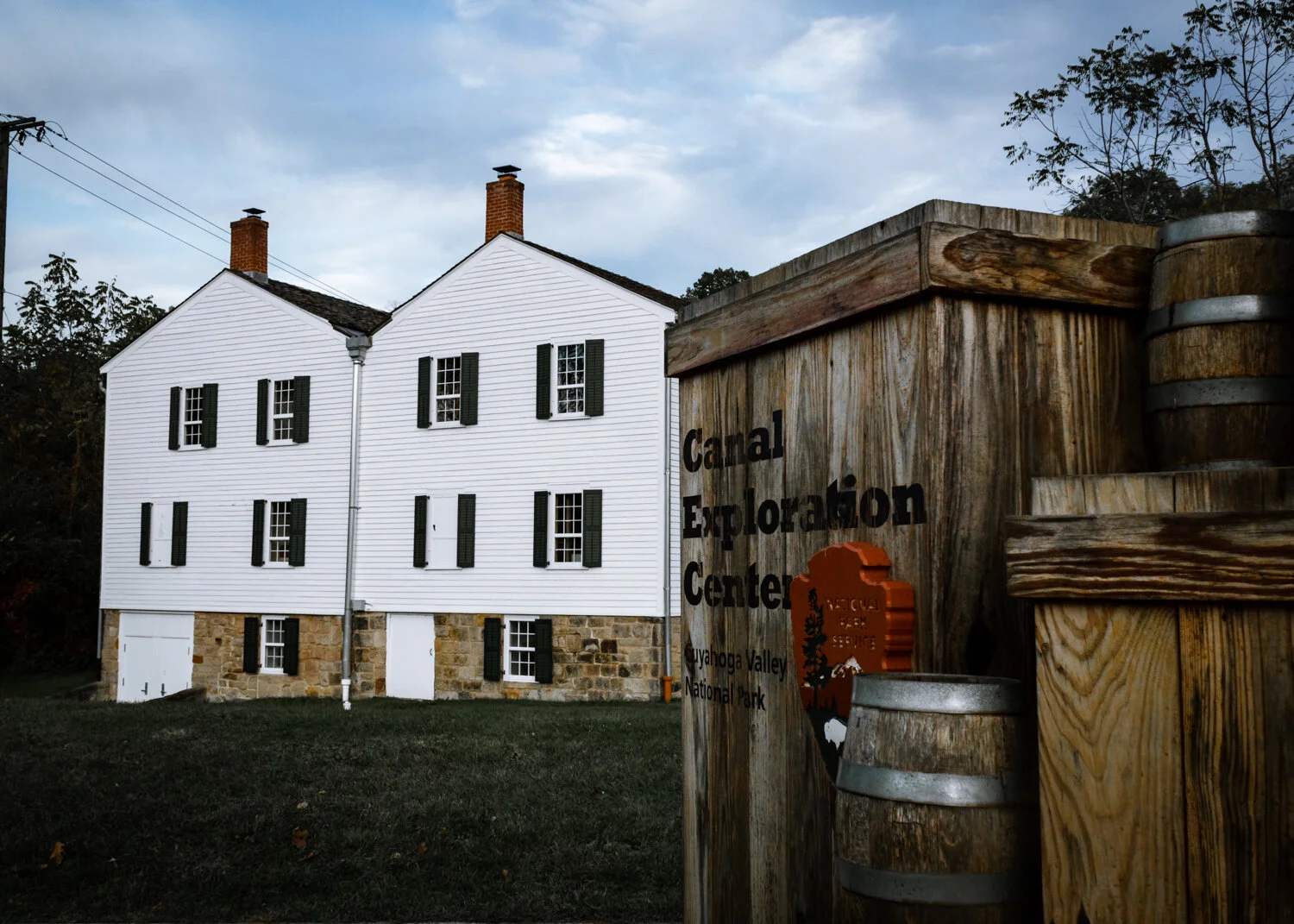Explore History Along the Ohio and Erie Canalway
Visiting Northeast Ohio and want to check out some local history? Then explore the Ohio & Erie Canalway, where you’ll travel back in time and see remnants of the canal era in Northeast Ohio, specifically the Cuyahoga Valley area. Here you can take a ride on the scenic railroad, go for a walk or ride a bike along the Towpath Trail, and explore historic towns and landmarks.
Explore the Ohio & Erie Canalway
In this post, you’ll learn the history of the Ohio & Erie Canal, how you can explore the National Heritage Area, and more. While the Ohio & Erie Canalway runs through more than just the Cuyahoga Valley, that is the area that I’m focusing on in this post.
Learn About the Canal
What is a Canal?
A canal is a man-made waterway that allows boats to pass from two different bodies of water. Canal locks are located along the waterway to raise and lower boats between stretches of water of different levels. The boats were pulled by mules on a trail next to the canal. However, in colder areas, such as Northeast Ohio, the canals would freeze and cause damage and tend to be closed during the winter months.
Building the Canal
After the construction of the Erie Canal that began in 1817 and benefited New York, and with no connection between Lake Erie and the Ohio River, Ohio was geographically isolated in the early 19th century, until 1822 when a resolution was passed to begin surveying the land. The canal was built not long after between 1825-1832, by mostly German and Irish workers, finally creating the first inland water route, that would help fuel westward expansion and connect the Great Lakes and the Gulf of Mexico. Soon, businesses, settlements, villages, and cities were built around the canal; most notably Peninsula and Boston, which became boat-building towns. The canal, when completed, was four feet deep and stretched 308 miles.
Unfortunately, in 1913 Ohio experienced a Great Flood, causing mass destruction and deaths to the Canalway and the area, causing the Canal to stop being used, as it was too expensive to repair.
Perks of the Canal
The canal allowed for materials and products from Ohio to be shipped to the East Coast as well as the U.S. being able to rely on its own resources. This made the Cuyahoga Valley go from remote backcountry to an industrial region. The canal allowed Ohio to open up and expand America’s market economy. More and more people were moving to the area, making Ohio the third most populated state by 1850.
The National Heritage Area
The Ohio & Erie Canalway was designated a National Heritage Area in 1996. There are only 49 total sites across the United States, and these areas are determined by the location of historical and culturally significant places. The Ohio & Erie Canalway National Heritage Area is roughly 110 miles long and 5-10 miles wide, spanning over five different counties in Northeast Ohio.
There’s a few ways to explore the area, including the Towpath Trail, the Scenic Railroad, and America’s Byway; all of these try to closely follow the route of the canals the best they can, as cities or growth have taken over some areas. They run from near downtown Cleveland to New Philadelphia, weaving their way through multiple county Metroparks and Cuyahoga Valley National Park.
>> Related: The Complete Guide To Cuyahoga Valley National Park <<
The Ohio & Erie Canal Towpath Trail
The Towpath Trail is roughly 87 miles currently, with more planned to be added by 2021. The trail has numerous entry points and is mainly used for walking and bike riding, as it tends to be flat and easily accessible, and also runs through Summit, Cleveland, Stark, and Tuscarawas Metroparks. Along the trail, you’ll find some of the old canal locks, where you can learn the history of that specific one. Most of the locks you can only view from the trail, but there are a few where you can actually walk in the lock.
Cuyahoga Valley Scenic Railroad
Over 100 years ago the Valley Railway began operations in 1880 to transport coal and provide passenger services. Around 1890, the train became a part of the Baltimore & Ohio Railroad, but the decline for trains began when automobiles were becoming more popular. It wasn’t until 1972 when the idea of a scenic route was made with the National Park.
Now you can take a ride on the Cuyahoga Valley Scenic Railroad, where many different educational and entertainment events occur throughout the year. The train operates with the National Park, the only partnership of its kind. CVSR runs from Independence to Akron, with about 26 miles of it within the National Park.
It’s an excellent opportunity for all to enjoy the park, and there’s a few different cabin options to choose from. Some notable events the train holds are the Polar Express in the wintertime and the Bike and Hike, where you can catch a ride to your next hike/bike route.
America’s Byway
America’s Byways are a way of connecting numerous sites of interest within an area and are designated by the U.S. Secretary of Transportation. The Ohio & Erie Canalway America’s Byway is 110 miles long and follows the path of the canal and shows the evolution/diversity of the area. It was designated with that status in 2000, but a few years before that it was deemed an Ohio State Scenic Byway. If you start in Cleveland, you’ll see the industrial legacy of the area, and as you head south you’ll go from the golden days of the Canal era to preserved structures and end in the south with traces of the pre-canal era.
Other Ways to Explore the Canalway
The Canal Exploration Center
A fairly recent addition to the National Park, at the Canal Exploration Center you can learn about the history of the canal through interactive maps and games, and read or listen to stories from people who lived and worked there.
Boston Store
The Boston Store used to be the National Parks visitor center and a canal boat building museum. But with the construction of the new visitor center, the Boston Store is now just a museum. Boston was one of the main boatbuilding towns during the canal era.
Ohio & Erie Canal Reservation
The Canalway Center in the Ohio & Erie Canal Reservation (part of the Cleveland Metroparks) is another great way to explore the canal area. Here you can learn some of the natural and cultural histories; there’s a play area, a bird viewing space, and more to see.
The Richard Howe House
Located in Akron, this historical home once belonged to Richard Howe, a Canalway engineer. The Richard Howe house is now the visitor center for the Ohio & Erie Canalway National Heritage Area. Howe was the resident engineer of the canal and supervised part of its completion.
You Might Also Like
A Guide to Northeast Ohio's Park History
Hiking in Cuyahoga Valley National Park














